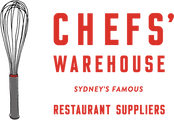
BREAD
This time last year, whilst enforced into lockdown, home baking became the activity of choice for many. Like numerous other products – in particular flour and yeast, baking tools became rare items and in hot demand.
We thought as the madness had settled (for now), and stock is again available, we would visit the essential bread baking tools.
The essentials of bread making are flour, water, some good bacteria and a strong pair of hands. However, there are three main tools of bread making that are useful in helping make the perfect loaf.
BANNETONS
Also known as proofing baskets, these products are used to hold and shape the loaf as it proves.
Traditionally made of willow, and wound into basket shapes, these are now manufactured in plastic also. The plastic ones are cast to mimic the ring patterns of the willow, so that the relief of the rings are imprinted onto the loaf.
The main point of difference is in the maintenance of the bannetons. The plastic ones tend to be less sticky and can also be washed and dried if required.
Willow tends to mildew easily, particularly in humid weather, and cannot be revived once this occurs. However, as they are made of a natural product, there is not so much concern with discarding them if this happens.
Assuming your dough is not too wet and rises successfully, either of these would be dusted with flour before the loaf is put in, and simply banged out of excess flour at the end of use.
You can of course simply use a colander lined with a tea towel for this process, however bowls should not be used as bannetons (willow or plastic) are designed to allow air movement around the dough, which enhances the proving process.
Rose Levy Beranbaum, sage of all things baking has this to say about
them in her definitive book ‘The Bread Bible’….
COUCHE
Couche (French for bed) is coarse woven linen. It is also used as tool for the proving of the bread. Ultimately any heavy cloth can be used for this purpose, however the traditional linen has a structure that also holds the loaf in place as it proves.
Couche is generally used for longer loaf shapes such as baguettes, or any freeform loaf shape you may care to make. It is folded around the loaf to make a bed (couche) for the rising dough.
Similar to the bannetons it requires flouring before use. It can be used to line bannetons if desired, although this would result in losing the patterns created by the bannetons.
Linen couche will mildew if left with any raw dough on it. It can be revived by washing however it does loose some of its structure with each wash.
LAME / BAKER’S BLADE
Not truly an essential item to create a loaf, but important none the less.
The lame is a very thin curved blade of stainless steel housed in a plastic handle. Single razor blades, or very sharp paring knives can be used to achieve the same result, however care must be taken not to cut too deeply with these blades.
Regardless of the specific tool, they are all used to slash the very top layer of the loaf immediately before placing in the oven to bake. These small slashes to the surface allow for the dough to expand evenly in the oven, but also for excess moisture and any build up of gasses (mainly carbon dioxide) to escape as the loaf bakes.
An experienced hand will score the loaf to precisely control where the loaf opens, and blooms.
Traditionally these cuts were also used to signify the baker responsible for the loaf, by using the scores as a form of signature, and many artisan bakers still use them for this purpose as well.
OTHER USEFUL BAKING TOOLS:
Pastry brushes
Dough cutter
Simple plastic or metal card which is helpful in the initial stages of bringing the dough together before kneading. Then used to portion / cut dough for proving
Timer
Oven Thermometer
Necessary to confirm the operating temperature of your oven before you put your loaf in.
We suggest setting your oven to 100 degrees and placing the oven thermometer inside for 5 minutes of so. Then open your oven door and take a reading of the internal temperature.
Check this against what your oven says it is and then set your oven according the to difference.
It is useful to do this with your oven each time you bake to ensure it is being set correctly according to your loaf requirements.
Instant read probe thermometer
A useful tool is taking the temperature of raw dough and baked breads. The Thermapen is reliable and has a very quick read time.
Scales
A small digital scale will ensure your measurements are correct and your loaf is a success.











Add a comment